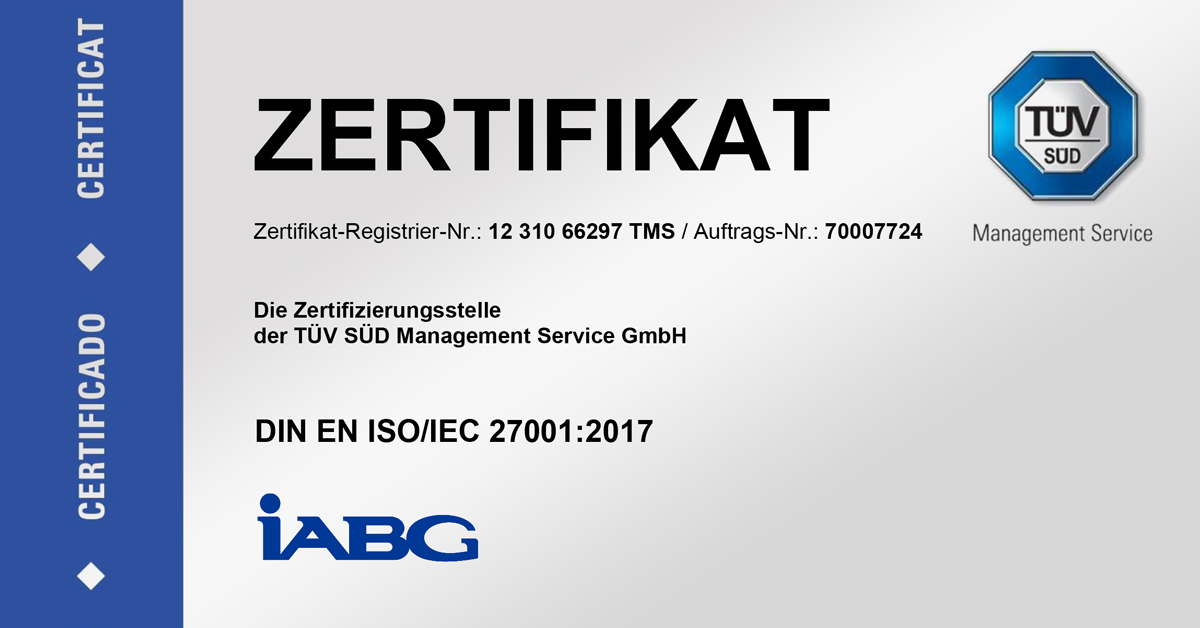The European comet probe «Rosetta» is on its way into space. Its Ariane 5 launch rocket lifted off on Tuesday, 02. March 2004 from the Space Centre in Kourou in French Guyana and sent the probe off into space successfully. Rosetta, with the «Philae» lander on board, is to find out about the creation of the solar system 4.5 billion years ago, the origin of water on the Earth and perhaps also the origin of life. If the mission runs to plan, Rosetta will reach the comet Churyumov-Gerasimenko in November 2014 after a flight lasting 10 years and having covered five billion kilometers. The landing robot Philae will then for the first time in space history attempt to land on a comet.
This is the to date costliest <link http: www.esa.int esacp index.html external-link-new-window externen link in neuem>ESA research project with total cost of over one billion Euro. In advance therefore, everything possible was done to ensure the success of the mission. The tests at IABG made an important contribution to this. The high-tech laboratory, Philae, (previously known as Rosetta lander) was tested thoroughly in our <link internal-link internen link im aktuellen>Space Test Centre from Sept to Nov 2001 concerning its space viability. In this period, an international team of specialists was active at IABG.
Philae had to go through the full programme. The vibrations occurring during the launch were simulated using vibration tests. The extreme conditions in space make particularly high demands of the material. In a space simulation chamber, therefore, vacuum, space cold and solar radiation were simulated. Investigations on electro-magnetic compatibility were similarly part of the test programme as were the opening up tests of the landing legs in a vacuum at different temperatures. We determined the mass and centre-of-gravity and subjected the whole lander unit finally to magnetic purity tests. For this purpose, the sole existing magnet field simulation facility in Europe was used.
Philae completed all the tests successfully. There is nothing to prevent a rendezvous with comet in our view – we are keeping our fingers crossed!
- Business Fields
-
Automotive
- Automotive
-
-
Testing and fatigue strength
- Testing and fatigue strength
- Complete vehicles
- Vehicle bodies
- Chassis
- Engine & Powertrain
- Interiors
- Safeguarding mechatronic systems
- Advice on Test Programmes and Test Signals
- Prüfstandsbau
- Development Services
- Climatic Environmental Simulation
- Materials Testing and Failure Analysis
- Publications
-
Testing and fatigue strength
-
InfoCom
- InfoCom
-
- Shaping digitization securely
-
Cyber security
- Cyber security
- ISMS and risk analysis
- Technical IT security
- Cyber Defence
- BOS Digital Radio Network
- Industry 4.0 / Internet of Things
- Control and situation centres
- Satellite navigation - Satellite communication
- Safe City
- IT Public procurement management
- Government Agency Networks
-
Mobility • Energy
- Mobility • Energy
-
- Rail & track
- Sicheres Autonomes Fahren
- Testing and qualifying hydrogen technologies
- Construction of burst chambers
- Nuclear technology
-
Safeguarding of artificial intelligence (AI)
- Safeguarding of artificial intelligence (AI)
- The new DIN SPEC 92005
-
Engineering and Support of wind energy plants
- Engineering and Support of wind energy plants
- Technical computations and system simulation
-
Testing & qualification of wind energy plants
- Testing & qualification of wind energy plants
- Test stand construction and testing
- Testing and Fatigue Strength
- Materials Testing and Failure Analysis
-
Mobility services
- Mobility services
- Inductive energy transmission
- Environment & geodata service
-
Aeronautics
- Aeronautics
-
- Experimental testing
- Development of functional and system test benches
- Structural monitoring, inspection and analysis
- Functional Safety and Operational Safety
-
Provision of the test infrastructure
- Provision of the test infrastructure
- Our test halls and test sites
- Functional test benches
- References
- Publications
-
Space
- Space
-
- Mechanical Tests
- Space Simulation tests
-
Electromagnetic Tests
- Electromagnetic Tests
- Electromagnetic compatibility (EMC)
- Magnetic field measurement / Magnetic field simulation
- Infrastructure
- Engineering support
-
Management consulting
- Management consulting
- Programme Support
- Consulting on the implementation of management systems
- Project references
-
Defence & Security
- Defence & Security
-
- Domains
-
Services & solutions
- Services & solutions
- Capability Management
- Procurement support
- Services, operation & training
- Smart Tools
-
Expertise
- Expertise
- Integrated Logistics
- Life Cycle Cost Management
- IT-Security
- Survivability
- Vulnerability & effect on target
- Human factors & ergonomics
- Safety
- Systemic Analysis
- Security Policy
- Architecture & Process modelling
- Modelling & Simulation
- Intelligence, Surveillance & Reconnaissance (ISR)
- Systemt engineering AIR
- System engineering SPACE
- System engineering MARITIME
- Armament
- Sensor systems
- C4I systems
- Protection, Impact- and High Risk Testing
- Technology Roadmapping
- Innovation


